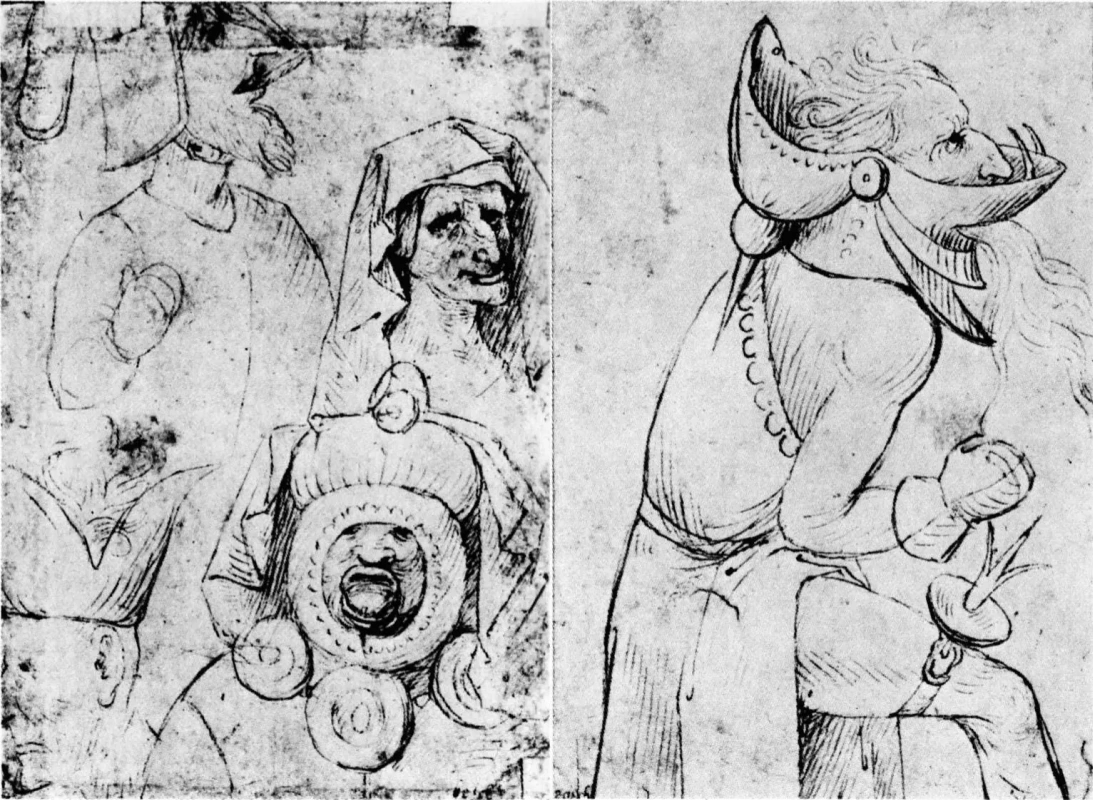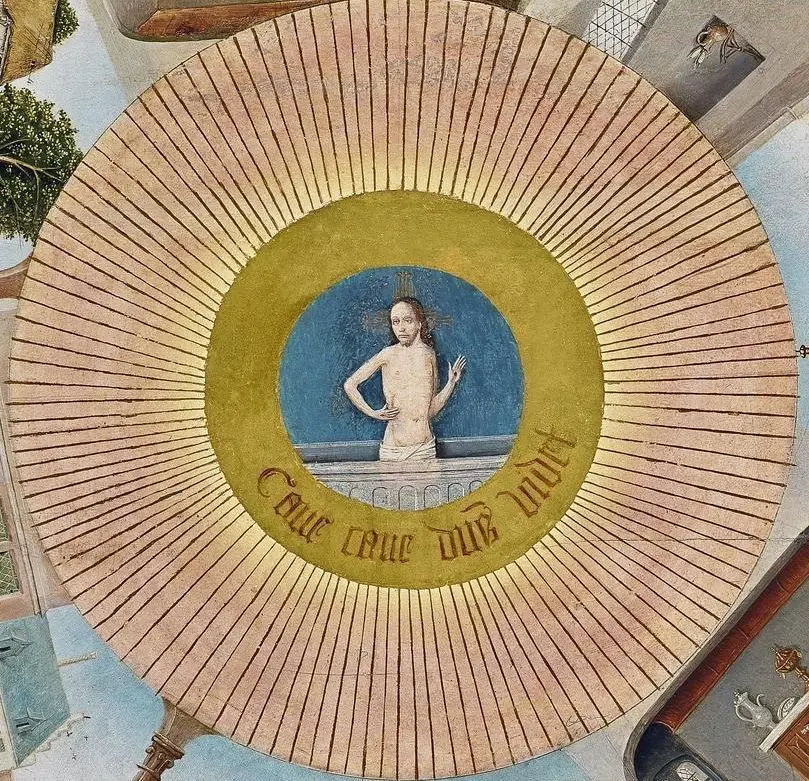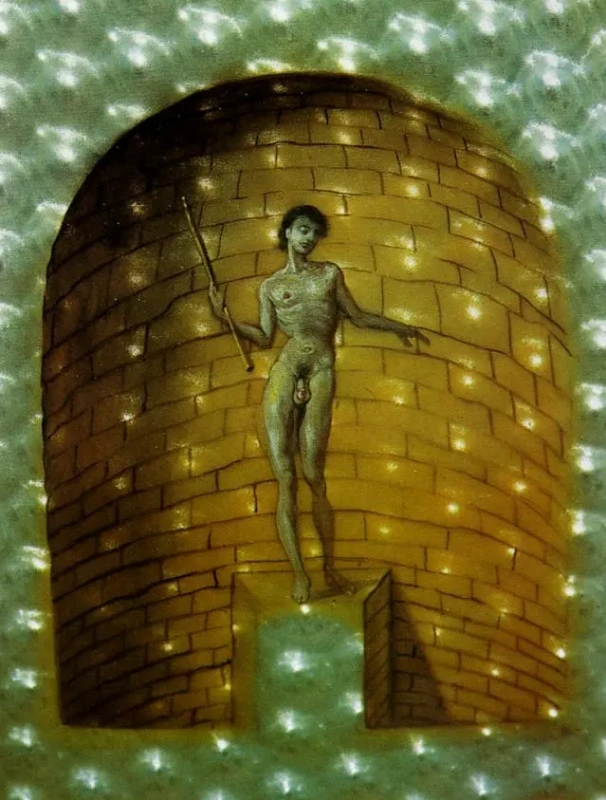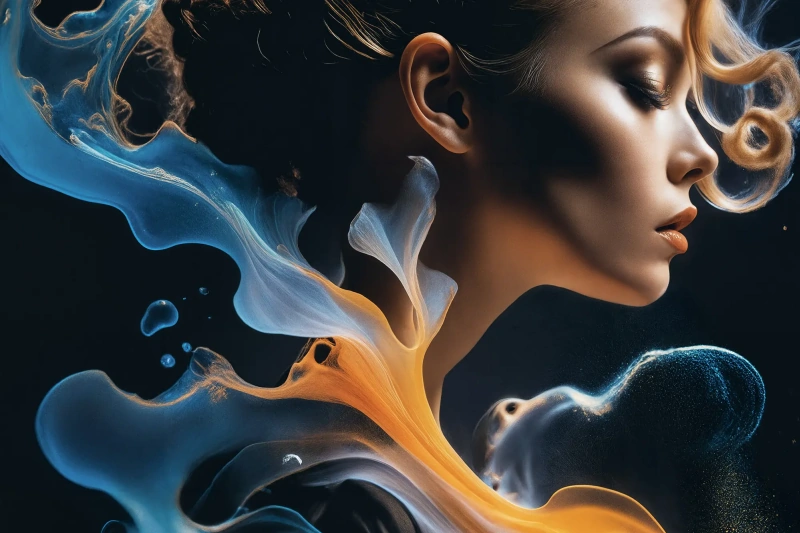Hieronymus Bosch, and the Surrealists. What kind of a roll call unites them through the centuries?
Sitting in the Montparnasse cafes, the poet Guillaume Apollinaire (1880−1918), who invented the term "Surrealism", looked through the haze of alcohol into the bustling Paris, surrounding him, and wrote:
"Even the automobiles are antiques
Religion alone remains entirely new religion
Remains as simple as an airport hangar
In all Europe only you O Christianism are not old
The most modepen European Pope Pius X it’s you…"
Noone would say better than the poet — a motley crew of outcasts, artists, poets, beggars, atheists and cosmopolitans found its home in a big bourgeois Paris. Searching of the spiritual father led these fanatics of freedom of creation to one of the most severe singers of imminent apocalypse, profoundly religious artist, whose oeuvre we’re unable to figure out till the end, Hieronymus Bosch. There are many reasons, many of which are based on the other side of logic.
Sitting in the Montparnasse cafes, the poet Guillaume Apollinaire (1880−1918), who invented the term "Surrealism", looked through the haze of alcohol into the bustling Paris, surrounding him, and wrote:
"Even the automobiles are antiques
Religion alone remains entirely new religion
Remains as simple as an airport hangar
In all Europe only you O Christianism are not old
The most modepen European Pope Pius X it’s you…"
Noone would say better than the poet — a motley crew of outcasts, artists, poets, beggars, atheists and cosmopolitans found its home in a big bourgeois Paris. Searching of the spiritual father led these fanatics of freedom of creation to one of the most severe singers of imminent apocalypse, profoundly religious artist, whose oeuvre we’re unable to figure out till the end, Hieronymus Bosch. There are many reasons, many of which are based on the other side of logic.

While searching information about Hieronymus Bosch and diving into the depths of the internet, you can find sometimes surprising stylistic revelations. For example: "In Bosch paintings there are combinations of prehistoric plants, birds and animals, and even the aliens with their amazing flying machines."
Apparently, strange biomechanical monsters with their amazing flying machines, which the author, seemingly, knew personally, were necessary to somehow explain the poetics of Hieronymus Bosch. Imagine all the diversity of the flora and fauna at the times of the great master of the Northern Renaissance . Can you imagine? And now agree that if he lived in our time and exhibited his pictures on the Internet, there would be million comments such as: "What's that?!"
Apparently, strange biomechanical monsters with their amazing flying machines, which the author, seemingly, knew personally, were necessary to somehow explain the poetics of Hieronymus Bosch. Imagine all the diversity of the flora and fauna at the times of the great master of the Northern Renaissance . Can you imagine? And now agree that if he lived in our time and exhibited his pictures on the Internet, there would be million comments such as: "What's that?!"

The attainment of spiritual father
We had to mention all the above said to illustrate the Surrealists' relation (such as Salvador Dali and Boris Vallejo) with Hieronymus Bosch, as it was their honor to join Bosch to the ranks of the mass culture’s saints.Artists like Salvador Dali were able to "impose oneself to the era" to such a great extent, that in the collective unconsciousness they became a symbol of Art (with a capital "A"). Of course, the famous Spaniard had to find the roots of his art in the past. So from the darkness of the museum vegetating, from private rooms of European rulers, from the history of art Bosch was found. He was found and thrown into the waves of mass culture.
That is how Hieronymus Bosch became known to wide audience and made a splash, and Salvador Dali, in particular, and the Surrealists, in general, found their spiritual ancestor.
We are not talking about Bosch as a geniuse. Though just for a while.
Actually, what does make us say "genius"?
The Bosch’s characters affect the imagination of not only the art professionals, but also our contemporaries who are familiar not only with the "aliens' flying machines", but also with the Alien and the Predator.

The Salvador Dalí's drawings from the collection of Theatre-Museum in Figueres and fragments of Hieronymus Bosch triptychs "The Garden of Earthly Delights" (right wing) and "Temptation of St. Anthony" (left wing).
Bosch's adherents
What does the Renaissance artist Hieronymus Bosch, active in the second half of the XV — beginning of XVI century, have in common with the Surrealists?The Surrealists and the greatest theorist of Surrealism Andre Breton, in particular, considered that Bosch was "the singer of the unconscious", and his oeuvre was " the example of automatic writing". That is, the artist wrote, whether with words or visual images, some information arisen to him through dreams and visions. And the hand follows the images, ignoring the rational esthetics.
The major instrument of the Surrealists, that’s suggestive of its name, was the irony, magic, subconscious, erotic. The basic form, phantasmagoria, emerged from the symbolism . Or, for the mature artists, phantasmagoria became a way of transformation, of challenge of wingless Realism , or lost freshness and elasticity of the Impressionism .
Surrealism was defined by Andre Breton in Surrealist Manifesto, the main document of the art movement, as "Psychic automatism in its pure state, by which one proposes to express — verbally, by means of the written word, or in any other manner — the actual functioning of thought. Dictated by thought, in the absence of any control exercised by reason, exempt from any aesthetic or moral concern".
Surrealists, seemingly, grabbed the viewer, stunned by wigs out’s image "Look here!". We are talking now about the artists, such as Salvador Dali, Rene Magritte, Max Ernst, the most deep-rooted in the mass consciousness authors.
So what do they have in common with Hieronymus Bosch?
Paola Volkova, an art critic and art historian, a unique figure in the pantheon of cultural scientists of the second half of the XXth century: "When Andre Breton issued the "Surrealist Manifesto" in 1924, in the twentieth century he first referred to Hieronymus Bosch as the predecessor of surrealism. That’s what it says, the surrealism
considers Hieronymus Bosch as its forerunner, its predecessor. Because his world turned inside out the consciousness. He reveals to us nightmares-phantoms of the subconscious, nightmares of the unconscious, presents us absolutely all the forms of our instincts, just embodied in images, in reality, in the subject, in allegory".
When God was alive…
The Surrealists treated the legacy of Bosch very freely following Moliere: "I take my property wherever I find it". To their credit, they also returned almost forgotten master of the Renaissance into the history of art, culture, modernity.The Surrealists lived in the twentieth century, the time when the First World War and the gas attack at Ypres have not just called into question the faith, but abolished it altogether.
Bosch, as a man of his time, had a world built up on a clear and unshakable vertical, where the Lord was on top, and the Hell was at the bottom. Bosch, above all, was a Bible-believing Christian, then a craftsman, and only afterwards — the artist.
It would be good to figure it out with the Renaissance . Because Renaissance came to European countries not simultaneously. In general, it appears that the term itself came into use much later, almost in the XVIII century. Then it became necessary to revise the European history, and put it in some order.
And speaking about Bosch we should say that the range of themes and images, the nature of painting, an accordance to certain principles, tends most likely to the Middle Ages. In any case, according the paintings of the master survived until our days.
And yet, a real mystery remainsthe same, even when things as they really are.
Bosch, as a man of his time, had a world built up on a clear and unshakable vertical, where the Lord was on top, and the Hell was at the bottom. Bosch, above all, was a Bible-believing Christian, then a craftsman, and only afterwards — the artist.
It would be good to figure it out with the Renaissance . Because Renaissance came to European countries not simultaneously. In general, it appears that the term itself came into use much later, almost in the XVIII century. Then it became necessary to revise the European history, and put it in some order.
And speaking about Bosch we should say that the range of themes and images, the nature of painting, an accordance to certain principles, tends most likely to the Middle Ages. In any case, according the paintings of the master survived until our days.
And yet, a real mystery remainsthe same, even when things as they really are.
Hieronymus Bosch is the artist of the dark ages, the singer of the last days. And talented Surrealists in Paris — during the period between the two world wars — anticipated the dark shadow of impending over Europe fascism. Therefore they unmistakably chose the figure of the spiritual father.
"In Bosch we trust".
"In Bosch we trust".
Great masturbator
1929, 110×150 cm
Grim game. Fragment
1929, 44.4×32.3 cm

And if faces from Dali’s paintings were rotated 90 degrees and placed next to a fragment of a landscape from triptych of Bosch …
The title illustration: a fragment of the right wing of triptych "The Garden of Earthly Delights" by Hieronymus Bosch
Author: Inga Esterkin
Author: Inga Esterkin






























